

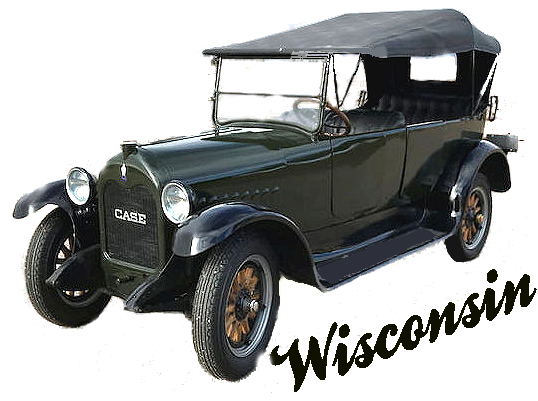
Mobile users:
For best results, view in Landscape mode.
Nash:
In 1916, Nash Motors
was founded by
former General Motors president Charles
W. Nash who acquired the Thomas B.
Jeffery Company in Kenosha, Wisconsin.
Jeffery's best known automobile was the
Rambler, whose mass production
began in 1902.
Nash Motors Company was based
in
Kenosha, Wis. from 1916 to 1937.
From 1937 to 1954, Nash Motors was the
automotive division of the Nash
Kelvinator Corporation.
Nash Kelvinator Corporation was the
result of a merger in 1937 between
Nash Motors and Kelvinator Appliance
Company.
In 1952,
Kelvinator introduced the
Kelvinator Food-A-Rama Side by
Side Refrigerator, one of
the earliest modern side-by-side frost
free refrigerators.
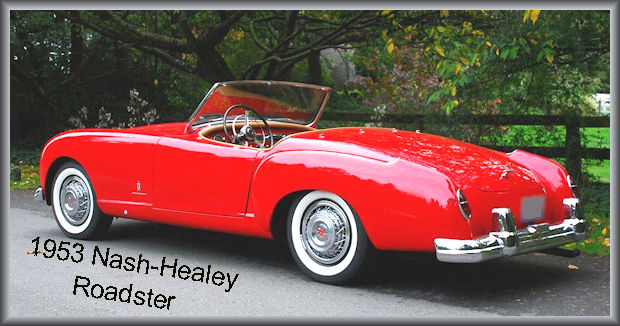
The Nash-Healey was a two-seat
sports car that was produced
between 1951 and 1954.
It was "America's 2nd post-war
sports car", and the first introduced
in the U.S. by a major automaker
since the Great Depression.
Nash Motors production
continued from
1954 to 1957 after the creation of
American Motors Corporation.
(AMC)
first vehicle produced to bear the
name of the new company's founder.
Nash pioneered some important
innovations.
Using its Kelvinator refrigeration
experience, the automobile
industry's first single unit heating
and air conditioning system was
introduced by Nash in 1954.
The unibody construction in 1941,
seat belts in 1950,
a compact car also in 1950, and
muscle cars in 1957.
Nash and Hudson production ended
with the last Hornet made
in June, 1957.
From 1958 to 1962, Rambler and the
Metropolitan were the only brands of
cars sold by AMC.
By 1965 the Rambler name would
begin to be phased out and AMC would
take over as the brand name until the
1988 model year.
The last U.S. built Rambler was
produced in 1969, and it was one
of over 4.2 million cars to carry the
Rambler name that rolled off the
assembly line in Kenosha.
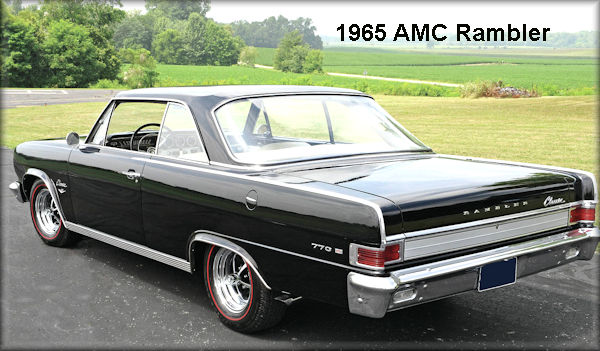
In 1987 Chrysler Corporation made a
public offering to acquire all shares of
AMC on the NYSE.
The shareholders approved the offer and
AMC became a division of the
Chrysler Corporation.
The Ajax-Nash Automobile:
The Ajax was an automobile brand
manufactured by the Nash Motors
Company of Kenosha, in
1925 - 1926.
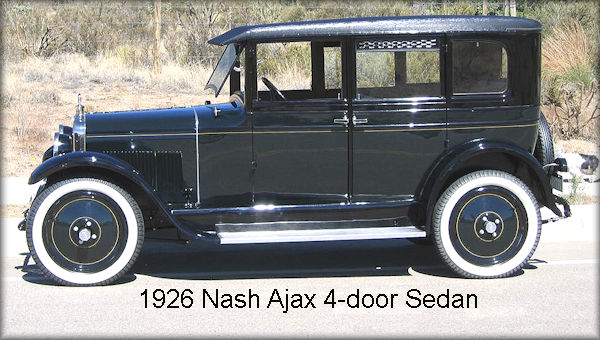
The Ajax was produced in the
newly acquired Mitchell Motors
Company plant in Racine.
In 1926, all Ajax models were
converted into Nash Light Sixes.
Demand for Nash automobiles was
so high that by November 1924, the
company's existing plants were
operating around the clock 6 days
a week and Charles W. Nash
announced a $1 million expansion at
the automaker's original Kenosha
facility.
The Ajax was available in three body
styles: 4-door sedan, 4-door touring,
and a 2-door sedan.
The advertised retail price was $865
for the five-passenger touring car,
and $995 for the five-passenger
four-door sedan.
Charles Nash had the production
continue instead as the Nash
Light Six.
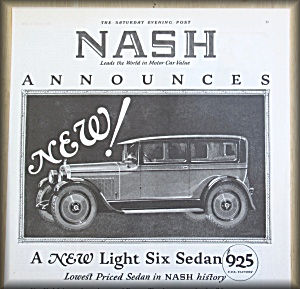
The Ajax came standard with a
170 cu in (2.8 L) L-head Nash
straight-six engine with a seven main
bearing crankshaft, force-feed
lubrication system, three-speed
transmission, four-wheel brakes
(at that time unusual for a car of its price),
steel disc wheels, as well as mohair
velvet upholstery and an electric
clock.
The Ajax Six produced
"genuine 60 mph" driving.
The Ajax was built using machinery
moved from Nash's other acquisition,
the LaFayette Motors Company of
Milwaukee, and installed in the
Racine plant.
The new Ajax was based on an earlier
design, premium version of the
Lafayette from the early 1920's.
Despite good reviews from the
automotive press and the general public,
the Ajax brand was discontinued in
1926 after over 22,000 models
were sold.
